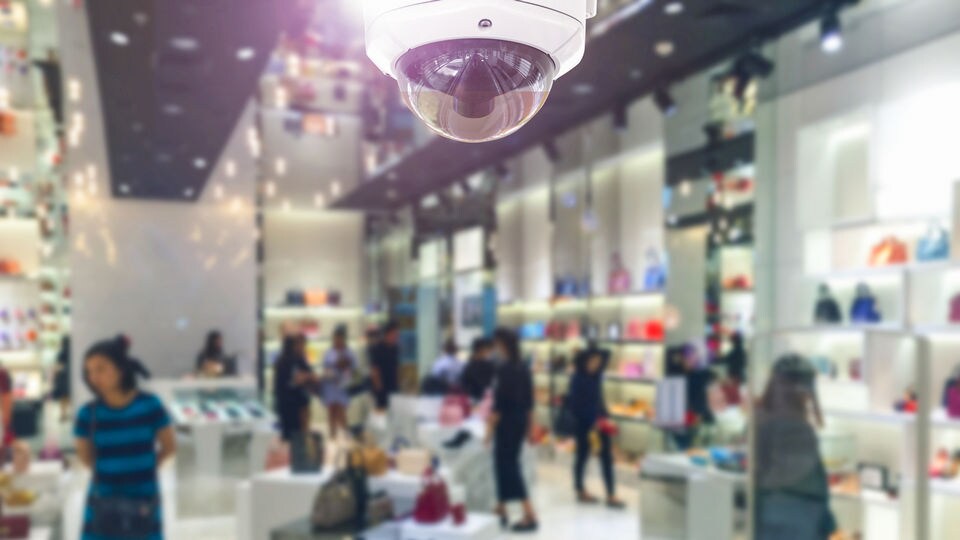Article
Why Computer Vision is a Game Changer for Your Shopper Journey

Do you have a firm grasp on your shopper persona – and when members of each demographic prefer to do their in-store shopping? How about the paths customers take from one department to another? Or how long it takes customers to check out, or how long they linger in front of a given display?
To collect that information, you could ask managers to monitor point-of-sale (POS) queues, watch video footage of the last few days' activity and review sale transactions. But those manual processes take up valuable time that could be spent on sales-generating tasks, and the insights they deliver are static – meaning they represent a moment in time and cannot adapt to changing consumer preferences or updates in your shoppers' demography. Alternatively, to gather this information, you could implement a technology capable of delivering continuously-evolving insights that address each of these questions and more. Plus, this technology is cost-effective and relatively quick to implement. In fact, it can even leverage your existing camera infrastructure.
This technology is Computer Vision, and it is quickly becoming a must-have technology for retailers of all types. In a previous article, we covered what Computer Vision is and how it is a game changer for loss prevention, but this time, we will break down how it delivers major insights that can help you to refine and improve your shoppers' journeys.
Evaluating your shopper journey starts here
So what exactly can Computer Vision do to help you better understand your customer journey? A better question might be: ‘What can't Computer Vision do?’ After all, it is configurable, adaptable and scalable across all your stores, no matter their size or the sector you serve.
Even better, we have flexible offerings which are effective for any retailer, no matter the existing camera coverage. If you are starting with little or no coverage, we can recommend a scalable roadmap, beginning with traffic analytics and scaling up over time. For retailers with perimeter-only coverage, we can augment Computer Vision to focus on the inside of the store. And when stores have complete (or near-complete) camera coverage, Computer Vision's full potential is unlocked. It is able to capture shopper movement throughout the store, from the moment of entry to the moment of checkout and even into the car park. This ability gives retailers the chance to gain major insights into how shoppers behave in the store, where they go and what they want. As a result, Computer Vision technology empowers retailers to:
- Create zone heat maps based on actual consumer traffic to optimise floor layout
- Measure shopper traffic, pass-by traffic, display interaction, dwell times and more
- Detect weapons, masks and aggressive behaviour
- Serve in-store advertisements
- Manage stock levels
- Assist with stocking and auditing planogram compliance
And plenty more! Let's dig into some of the biggest areas in which Computer Vision can impact your shopper journey.
Audience measurement and demography
Is your advertising truly reaching your target customers? Are you promoting the right products with special displays or end-caps? Are you attracting more customers of a certain gender than others? What about different age ranges? Computer Vision technology can tell you all of this, empowering you to make better product, promotion, staffing and even content choices based on real-world shopper engagement data.
Shopper engagement
Are your shoppers engaging with promotional displays or just stopping quickly, changing their minds, and moving on? With Computer Vision, you can easily measure the dwell time – or how long customers spend interacting – for any display, shelf or aisle. This can help you measure the marketing effectiveness of your promotions, and the type of products your customers want to see and ultimately purchase.
Shopper paths
Since a correctly configured Computer Vision solution can capture shopper movement within your stores, you can easily gain a comprehensive understanding of what paths they take from one section to the next, enabling you to merchandise those paths more effectively. You can also refine your stores' layouts to make the passage between popular zones or common paths-to-purchase easier and more convenient.
Put it all together to improve the shopper journey
Armed with these insights, you can now go beyond nebulous or outdated personas and instead refine your products, promotions, displays and floor data – all based on real-world data. You can create store layouts that are more convenient or more immersive and experiential, driven by what your customers actually prefer. You can ensure you have the right staffing to deliver a great in-store experience.
All of this adds up to a better experience for your shoppers, and that can lead to more traffic, more repeat visits – and more profit. That's a lot of ROI for a technology that is cost effective and easy to implement.
Of course, not every Computer Vision solution can do all of these things. In fact, many startups in the space offer retailers solutions based on off-the-shelf or general open-source object detection products. But solutions designed specifically for retailers – and built with the help of former retailers – can deliver on this promise and a whole lot more.
Learn more
To find out more about what Computer Vision can do to improve your shopper journeys – and how it can deliver value across the retail enterprise – download your copy of our latest report, ‘Computer Vision and the Future of Retail: Better Shopper Experiences, Improved Loss Prevention and Optimised Operations’ now.
Explore Related Topics

